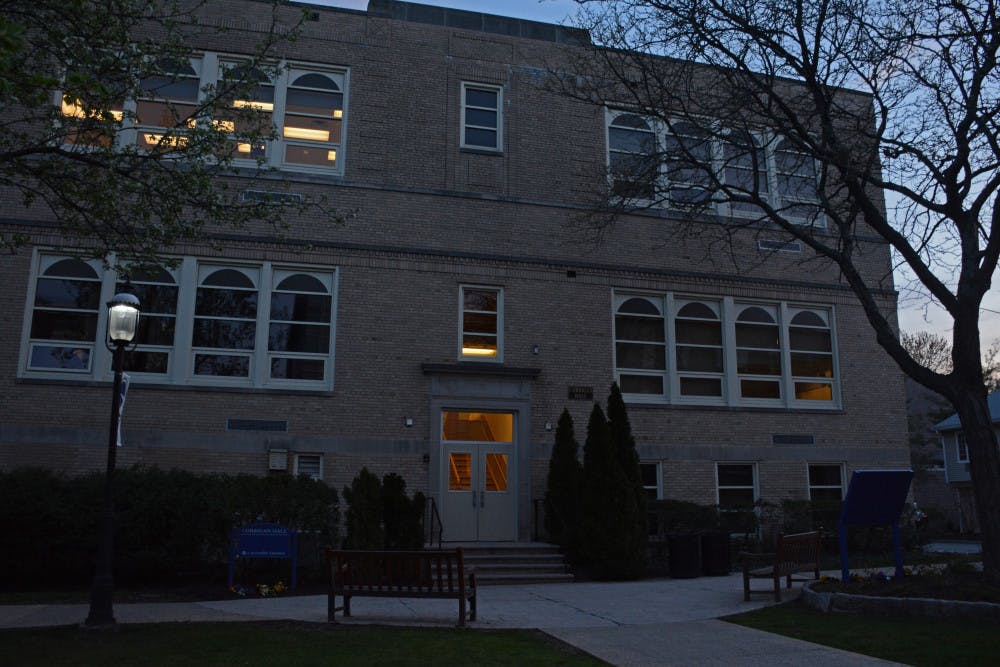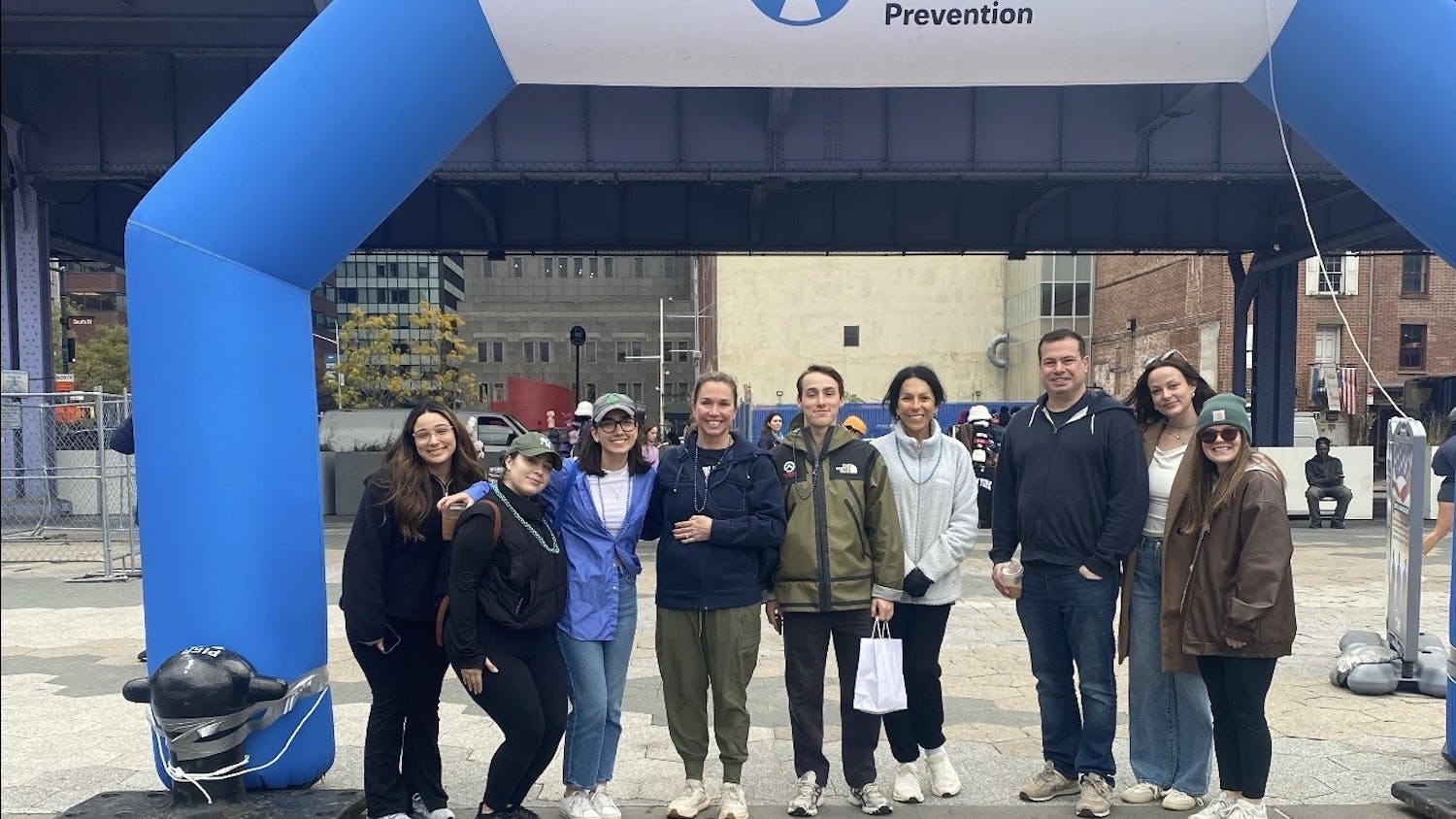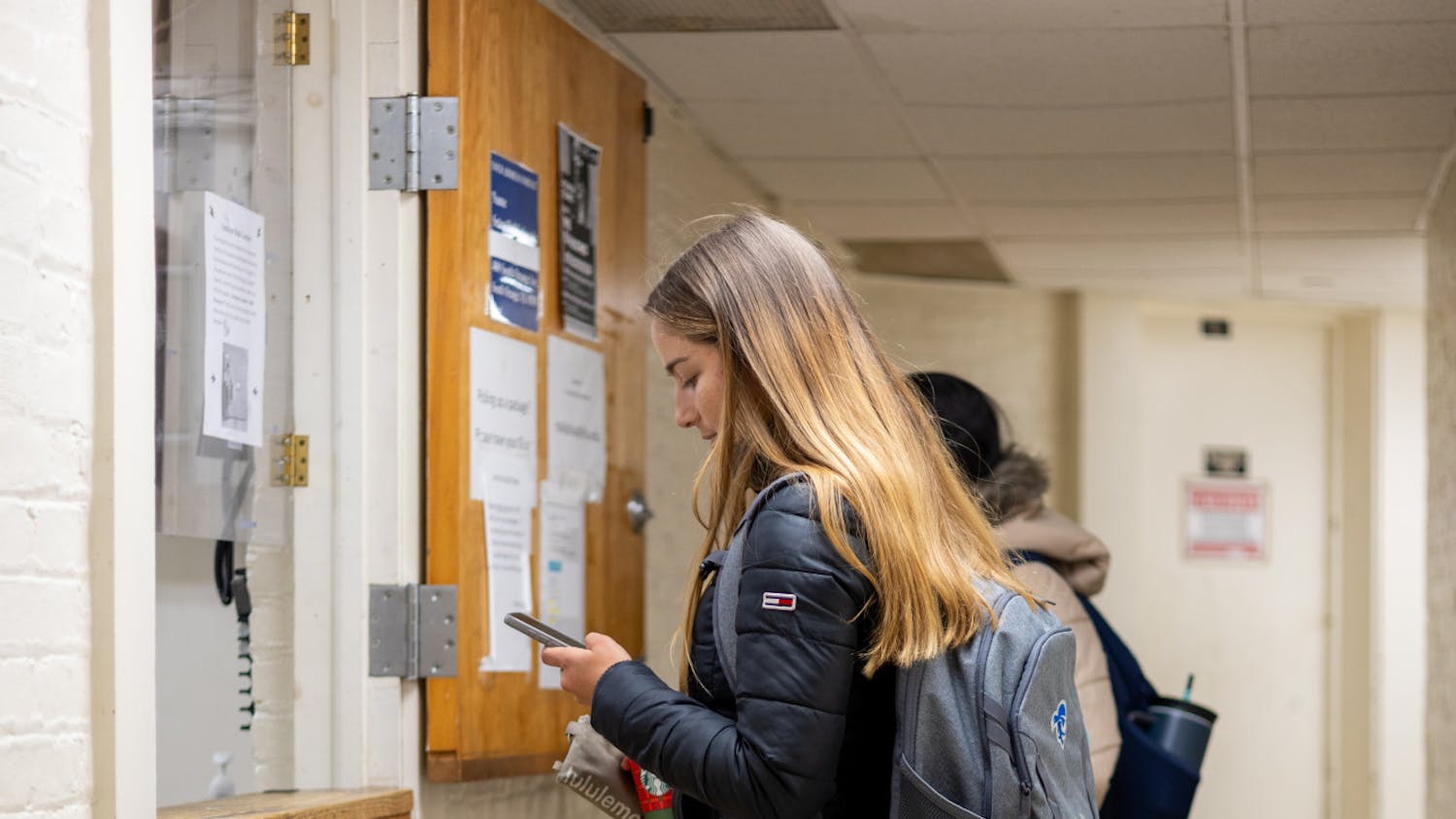The Setonian received an anonymous tip about apparent asbestos in the ceilings of Corrigan Hall on April 18.
According to John Signorello, the associate vice president of Facilities Engineering and Business Affairs, the asbestos “does not present a present danger.”
[caption id="attachment_23128" align="aligncenter" width="838"] Sarah Yenesel/Photography Editor Students are still concerned about the asbestos despite the university saying it is “not a present danger.”[/caption]
“Corrigan Hall and many other buildings, schools and homes throughout the United States built prior to the 1970’s contain asbestos,” he wrote in an email. “This building material was used in items such as insulation, floor tile, and fire proofing. The management of this material, while in place or being removed is regulated and can only be handled by people and contractors who are trained and licensed.”
Signorello added that the contractors and consultants the University uses to manage this material have noted, “maintaining it in good condition is often the best approach.” He then said that when it cannot be managed in good condition or when it needs to be moved for construction activities, it is done by a New Jersey contractor licensed in asbestos abatement under the New Jersey Construction Code.
“This is done outside of normal business hours or when the building is unoccupied,” he said.
Austin Francois, a junior criminal justice and political science double major, said that he still finds the asbestos concerning.
“It most certainly concerns me even though it isn’t a ‘present danger’ and second I think the school should remove all the asbestos and replace the ceilings with new materials,” he said.
Morwenna Cecil, a sophomore history major, said that the asbestos in Corrigan concerns her as well.
“Although it does not present a danger at the moment, if something like a leak were to disturb it then it would become an issue and pose a health risk to the students and faculty who use the building,” she said.
Cecil then shared how she thinks the school should deal with the situation saying:
“I think that the best thing that the school could do would be to use the quieter summer months to properly assess the situation, and if necessary take the asbestos out.”
Isabel Soisson can be reached at isabel.soisson@student.shu.edu.
Sarah Yenesel/Photography Editor Students are still concerned about the asbestos despite the university saying it is “not a present danger.”[/caption]
“Corrigan Hall and many other buildings, schools and homes throughout the United States built prior to the 1970’s contain asbestos,” he wrote in an email. “This building material was used in items such as insulation, floor tile, and fire proofing. The management of this material, while in place or being removed is regulated and can only be handled by people and contractors who are trained and licensed.”
Signorello added that the contractors and consultants the University uses to manage this material have noted, “maintaining it in good condition is often the best approach.” He then said that when it cannot be managed in good condition or when it needs to be moved for construction activities, it is done by a New Jersey contractor licensed in asbestos abatement under the New Jersey Construction Code.
“This is done outside of normal business hours or when the building is unoccupied,” he said.
Austin Francois, a junior criminal justice and political science double major, said that he still finds the asbestos concerning.
“It most certainly concerns me even though it isn’t a ‘present danger’ and second I think the school should remove all the asbestos and replace the ceilings with new materials,” he said.
Morwenna Cecil, a sophomore history major, said that the asbestos in Corrigan concerns her as well.
“Although it does not present a danger at the moment, if something like a leak were to disturb it then it would become an issue and pose a health risk to the students and faculty who use the building,” she said.
Cecil then shared how she thinks the school should deal with the situation saying:
“I think that the best thing that the school could do would be to use the quieter summer months to properly assess the situation, and if necessary take the asbestos out.”
Isabel Soisson can be reached at isabel.soisson@student.shu.edu.





